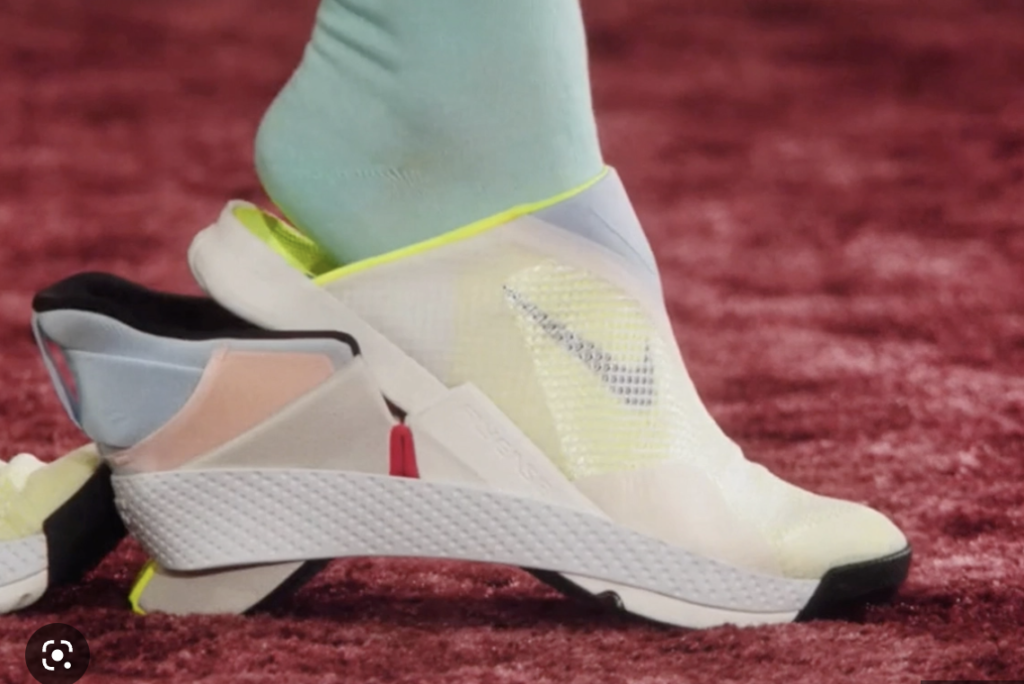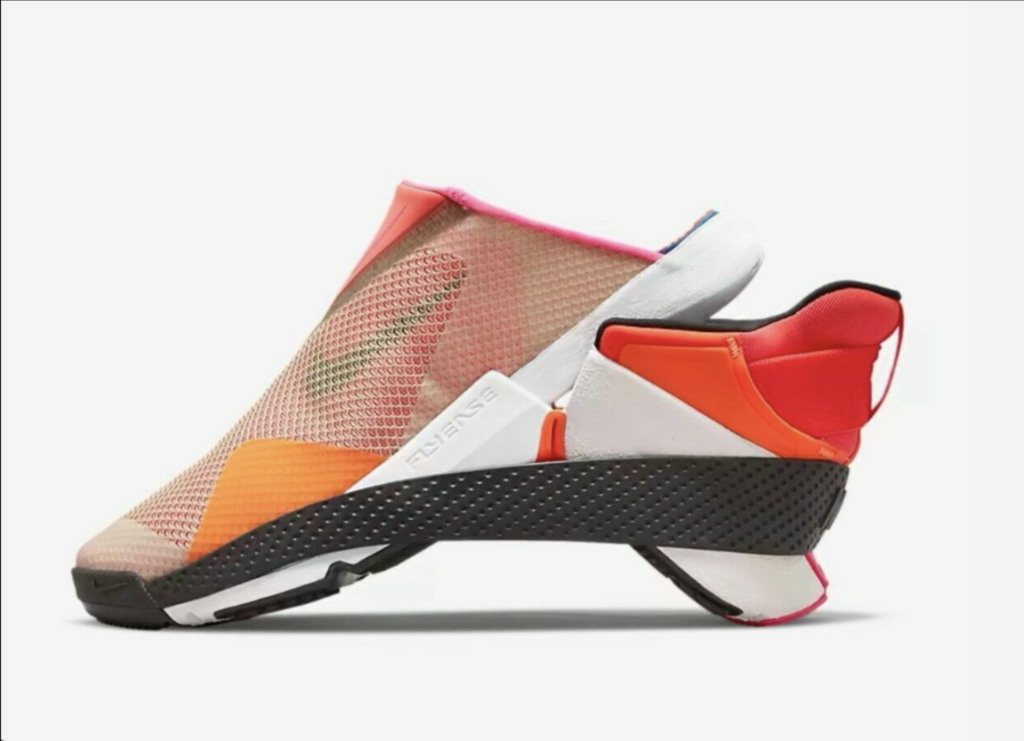The Nike Go FlyEase is accessible designed footwear that can be put on and taken off without any hand-held assistance. Slipping the shoe on and stepping down allows the shoe to lock into place. The shoe opens when one foot steps on the “kickstand” heel, allowing the shoe to pop up, and open.

The design of the Nike Go FlyEase exemplifies parts of the Social model, a common disability framework, in which, “disability is an avoidable condition caused by poor design.” By addressing the difficulties of putting on and taking off shoes – the lacing, tying, slipping on/off, needing to use a shoe-horn, etc. – with a unique and innovative design, the Go FlyEase addresses these inconveniences and setbacks by removing stigma, and inspiring creative design. A typical weakness of the Social model is that it de-emphasizes the biological reality of a disability, though I would argue that through their choice of models and advertising, Nike attempts to address it head on (seen left). In reality, these shoes are a great design for a variety of able-bodied people who dislike the chore of lacing up sneakers. These are a convenient, aesthetically pleasing option for those with arthritis, people with bad backs and can’t lean or bend over, and even those who just hate tying shoes.
The Go FlyEase offers more support than a typical slip-on shoe, like Crocs or clogs, and comes in fun colors and designs for a peppy, athletic-look, without offering the standard options for no-tie shoes, like velcro, and providing a more assistive design than simply replacing traditional shoelaces with coils. Perhaps a drawback to the innovative design is their universal popularity. As The Verge pointed out back in spring 2022, “The accessible shoes have been notoriously hard to find for people who need them.” While it’s unlikely that it was Nike’s intention to use a universally accessible design as a marketing scheme, since the shoe is relatively affordably priced, the Go FlyEase do seem to continue to have limited stock, sizes, and colors online.
Stepping on the back of the shoe activates the “kickstand,” allowing the tensioner band to slip down, and the bi-stable hinge to pop up, allowing the shoe to open.
Stepping down into the shoe activates the “diving board,” allowing the bi-hinge to go down, the tensioner band to rise up, and the shoe locks into place.

The Nike logo offers an empowering, athletic prowess (the “swoosh” is known to symbolize the wing of the Greek goddess of victory, Nike), which appeals to the aesthetic desirability.
In a similar fashion to the Social model, the Go FlyEase relates closely to the Functional Solutions model. It identifies one’s impairment, or limitation, to tying/bending/lacing up sneakers, and aims to eliminate this limitation through an innovative function. By developing the bi-hinge and tensioner band combination, the sneaker can now slip in, and most importantly, pop off. This usability meets people with where they are at, creating a universal solution for both the need and desire for easy on/easy off sneakers. However, per the usual weakness of Functional Solutions, Nike fails to reach further beyond this solution, and misses an opportunity for broader social change.
It is clear that the thoughtful design of Nike’s Go FlyEase is appreciated for their innovative approach, and aesthetic value. Especially when many other easy-on shoe options include design elements such as velcro, and coils, which can have very childish, or medical connotations, the Go FlyEase are a vibrant statement. It would be remiss not to mention the design works so well because of its brand association. The Nike logo offers an empowering, athletic prowess (the “swoosh” is known to symbolize the wing of the Greek goddess of victory, Nike), which appeals to the aesthetic desirability. There’s still much to learn and see with how the Go FlyEase will go (i.e., if stock continues to be limited, how the shoe ages, what sorts of technical mechanism failures may come up, etc.), but I am encouraged to see a major brand incorporating assistive design in their products, and that people are responding to it so well.
